One of the most challenging aspects of going keto is the sharp decrease in the amount of sweetness in your food. While you can still enjoy a varied diet and food bursting with flavor (that’s why we’re here, after all!), the change in sugar intake from an average Western diet to a keto one can be a pretty difficult adjustment.
The good news is there are many sweeteners on the market. Two of the safest and most effective are erythritol and monk fruit. Let’s look at each in turn and then compare the pros and cons.
Monk fruit
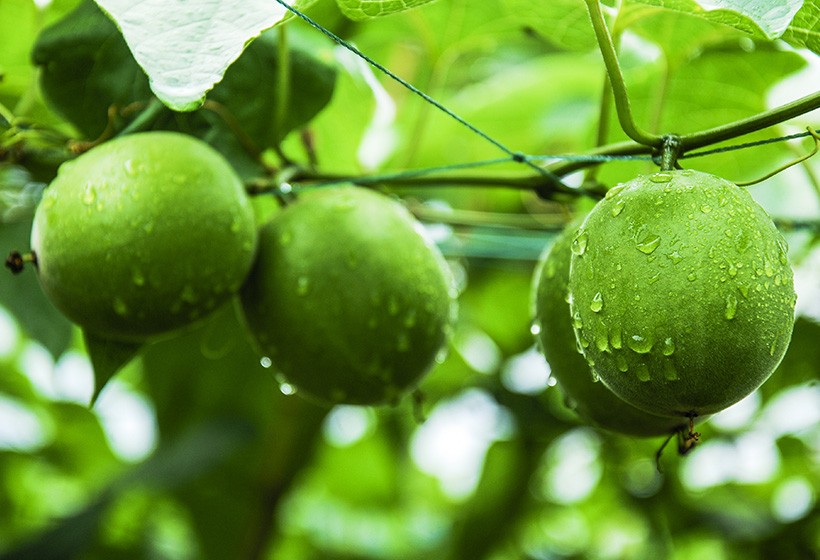
4-Week Keto Meal Plan
- 4 Weeks of Delicious Keto Recipes!
- Leftovers and Bulk Preps Included
- Maximize Your Keto Diet's Success
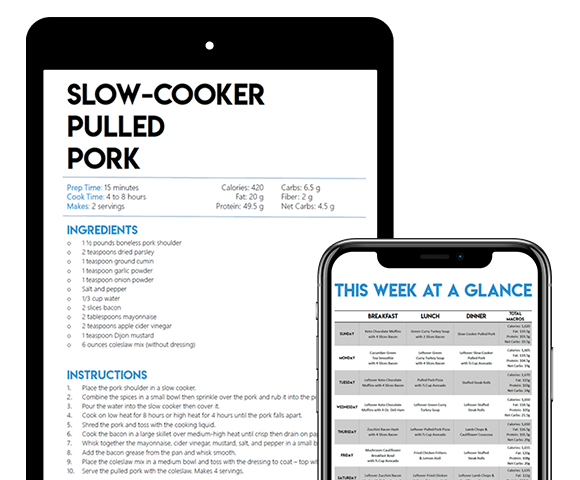
Monk fruit, also known as “lo han guo,” is from the southern, mountainous regions of China. It was initially cultivated by Buddhist monks, hence its religious-themed name. First discovered by Westerners in 1938, this delicate fruit was not widely spread due to the extremely short time span between its ripe and rotten stages. Modern refrigeration and storage methods would likely find a way around this problem, but the Chinese government has forbidden the export of any genetic material from the fruit for propagation. If you want it fresh, you have to go to Asia–though even in China, it is hard to store and it’s almost always purchased dried. In this form, it isn’t a perfect sweetener. There are many compounds in monk fruit that make the natural taste a little unpalatable–bitter and astringent. The dried fruits, sold in Chinese herbal shops, are most often used for the preparation of teas or soups.
That doesn’t mean you can’t use the fruit as a sweetener, but it does limit, to some degree, the options you have in how to use it. Contemporary sweetener usually consists of fruit that has been dried, ground into powder, and in many cases, combined with other sweeteners to granulate it, although some liquid products exist and are commonly used to sweeten drinks. The process of converting monk fruit into a granulated sweetener was first patented in 1995 by Proctor and Gamble, and the process to remove the bitter and astringent flavors takes some time and effort. The main offending compound in monk fruit is sulfur, but quite a few other chemicals have to be removed before it’s ready for consumption. Therefore, monk fruit sweetener is expensive—it is approximately twenty times the cost of sugar. On its face, this seems cost-prohibitive, no matter the benefits. Before writing the fruit off, however, there’s something else you should know.
Monk fruit is 300-400 times sweeter than sugar, depending on how purely it is extracted. A conversion chart for sweeteners shows that the sweetness of a 1/4 cup of sugar is achieved by 1/6 of a teaspoon of pure monk fruit, meaning you only have to use ~1.3% of the volume to achieve the same level of sweetness. When you look at those numbers, the cost quickly becomes not only justifiable but arguably downright cheap.
An important thing to note here: using super-sweet, pure monk fruit extract will affect the end result of your baked goods. Because you’ll be losing much of the bulk added from sugar or erythritol, your desserts may end up smaller or fewer. They’ll still taste great though!
One of the major benefits of monk fruit is that it doesn’t raise your glycemic index; i.e., the body doesn’t recognize it as a sugar. If this sounds too good to be true, it isn’t. It has been used as a natural sweetener for centuries and is unique among fruits because its sweetness doesn’t come from fructose, but from antioxidants called “mogrosides.” These are metabolized differently by the body, which is why they have no calories and have no effect on blood sugar. (Mogrosides are not absorbed in the upper gastrointestinal tract and therefore do not contribute any calories to our diet. In the colon, some of the mogrosides are broken down, where minor amounts enter the bloodstream and the rest leave through the urinary tract.
Monk fruit, much like stevia and erythritol, is 0 net carbs per serving.
Monk fruit provides numerous benefits:
- It is a powerful antioxidant and fights free radicals. Mogrosides have been shown in repeated studies to “significantly inhibit reactive oxygen species and DNA oxidative damage.”1,2 Stress caused by oxidation plays a major role in many diseases, so being able to fight this by using a sweetener is outright amazing.
- It lowers the risk of diabetes and obesity. Because it avoids the dangers of empty carbs and high glucose levels, which have repeatedly been shown to be key contributing factors in the development of obesity and Type 2 diabetes, this sweetener naturally combats these conditions. 3
- It is anti-inflammatory and cools the body. Monk fruit has been used as an anti-inflammatory agent for hundreds of years and was traditionally brewed into a tea. Uses for this sweetener also include cooling the body from fever and heat stroke. 4,5
- It helps prevent and treat cancer. Many studies have demonstrated the anticarcinogenic effects of mogrosides, which is somewhat ironic considering that many other sweeteners contribute to the development of cancer. 6,7,8,9
- Mogrosides have natural antibiotic properties which, in an age where antibiotics are often overused, is a benefit that can’t be overstated. 10,11
- It fights fatigue. Monk fruit has a well-established reputation as “the longevity fruit” and with good reason. Studies have shown that mice who received monk fruit extracts had longer exercise times and less fatigue than control groups. 12
- It fights insulin resistance. A significant causal factor of prediabetes and a struggle that many people face in being unable to lose weight is insulin resistance. Monk fruit combats this due to mogrosides’ unique ability to target their antioxidant properties specifically toward pancreatic cells, allowing better insulin secretion in the body. 13,14,15,16,17
- It works as a natural antihistamine. When used consistently, monk fruit has caused decreased allergic reactions, demonstrating that “both the [lo han kuo] extract and glycoside inhibited the histamine release” in test subjects. 18
Some common questions about monk fruits as low-calorie sweeteners:
Is monk fruit safe for children? Yes. These sweeteners are just as safe for children as they are for adults (which is to say: very safe). Due to limited studies, however, the American Academy of Pediatrics does not make any official recommendations about monk fruit for children, pro or con.
Can pregnant women or breastfeeding women eat monk fruit sweeteners? Yes. While no studies have been done in lactating women, studies have been conducted with animals and no animal has shown any negative side effects while lactating.
Can people with diabetes take monk fruit sweeteners? Yes. Monk fruit sweeteners do not affect blood sugar levels. The 2018 American Diabetes Association Standards of Medical Care in Diabetes state that, “The use of nonnutritive sweeteners may have the potential to reduce overall calorie and carbohydrate intake if substituted for caloric (sugar) sweeteners and without compensation by intake of additional calories from other food sources. Nonnutritive sweeteners are generally safe to use within the defined acceptable daily intake levels.” It is recommended, of course, that you consult a medical professional with any specific questions.
Erythritol
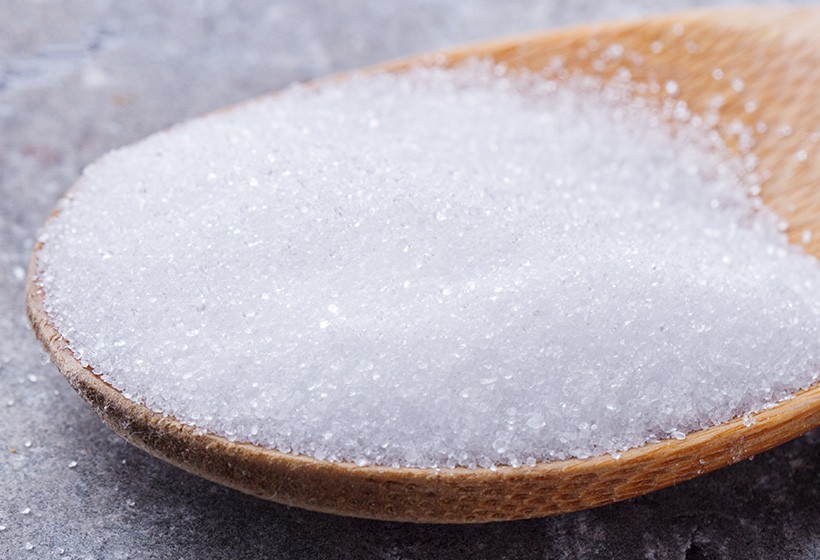
Erythritol is a type of sugar alcohol that occurs naturally in fruit, although in small quantities. Commercial production involves cultivating alcohol from glucose by adding yeast. Although its base is sugar, the body no longer reacts to it the same way once it has completed the fermentation process. It still tastes sweet but doesn’t raise blood sugar levels. In fact, studies have shown repeatedly that it may help to lower your blood sugar levels! Erythritol is 80% as sweet as sugar but has 5% of the calories–just 0.2 calories per gram.
There are several commercially-produced sugar alcohols (xylitol and sorbitol are others you may have heard of) and, as a class, they have some reputation for causing slight stomach upset and some feelings of bloating, cramps, or diarrhea when consumed in large quantities. These reactions most often occur when people attempt to replace their sugar intake with sugar alcohols but don’t decrease the amount of sweets they consume. Since the average American consumes between 150 and 170 pounds of sugar per year, you can imagine what ingesting that amount of fermented anything would do to your system. When sugar is replaced in your diet by sugar alcohols and you simultaneously decrease the amount of sweetener consumed, the likelihood of experiencing any of these symptoms decreases significantly.
Of all the sugar alcohols, erythritol is the least likely to cause any symptoms. Most sugar alcohols are not processed by your digestive system and pass through to your colon; this creates a laxative effect and is the cause of these potential issues. Erythritol is different: only ten percent of this sugar alcohol makes it to your colon while most of it is absorbed in your small intestine—from here it is excreted through urine rather than stools, which mitigates the chance of any unpleasant reaction.
Because it’s passed through the body, essentially untouched, erythritol does not affect blood glucose, making it 0 net carbs per serving. There are some calories in erythritol, but at 1.6 calories per teaspoon, they are negligible.
Pros and Cons

While monk fruit is exponentially sweeter than sugar, erythritol is somewhat less sweet than the glucose that forms its base. Both sweeteners can cause a slight “cooling” sensation if used a lot in a dessert recipe.
Erythritol is easier to find on the shelf than monk fruit sweetener, although both are relatively easy to find online. Many common brands of erythritol include Swerve, Sukrin, Truvia, So Nourished and more. One thing you’ll want to be aware of is that many products combine sweeteners, so make sure that you’re either buying 100% pure erythritol or monk fruit sweetener (or a combination of the two!), or you may end up with a product mostly full of dextrose! Always check the nutrition label before buying new products.
You can purchase 100% pure erythritol or a monk fruit-erythritol blend that is just as sweet as sugar!
Some consumers have stated that they can detect a slight, fruity aftertaste when using pure monk fruit as a sweetener, while others have mentioned an aftertaste from erythritol that they describe as “super sweet.” Both sweeteners are approved by the FDA for consumption without restrictions, meaning it’s safe for children, pregnant, and nursing women.
The most significant problem encountered when using sweeteners is how they affect baking. Unfortunately, neither of these sweeteners completely mimic the effects of sugar in baking; although the sweetness can be replicated, many bakers have experienced flatter, denser products that don’t rise as well. Experimenting with different combinations of sweeteners and additional rising agents (e.g., yeast, baking soda) in your favorite recipes is the best way to go. Erythritol also doesn’t dissolve in liquid as well as sugar and may therefore leave a bit of a gritty texture. You’ll want to experiment as you use it to see where it’s best used.
Both sweeteners are highly recommended as safe, natural alternatives to sugar as sweeteners. Neither raise your glycemic index and are therefore keto-approved and recommended for diabetics. Whether you choose monk fruit or erythritol is mostly a matter of personal preference. It should be comforting to know that when you can’t fight that sweet tooth any longer, you have alternatives that won’t knock you out of ketosis!
NUTRITIONAL DISCLAIMER
The content on this website should not be taken as medical advice and you should ALWAYS consult with your doctor before starting any diet or exercise program. We provide nutritional data for our recipes as a courtesy to our readers. We use Total Keto Diet app software to calculate the nutrition and we remove fiber and sugar alcohols, like erythritol, from the total carbohydrate count to get to the net carb count, as they do not affect your blood glucose levels. You should independently calculate nutritional information on your own and not rely on our data. The website or content herein is not intended to cure, prevent, diagnose or treat any disease. This website shall not be liable for adverse reactions or any other outcome resulting from the use of recipes or recommendations on the Website or actions you take as a result. Any action you take is strictly at your own risk.
- The Brain’s Role in Weight Loss - March 11, 2019
- Making Fat Loss EPOC - March 8, 2019
- Overcoming Plateaus - March 6, 2019
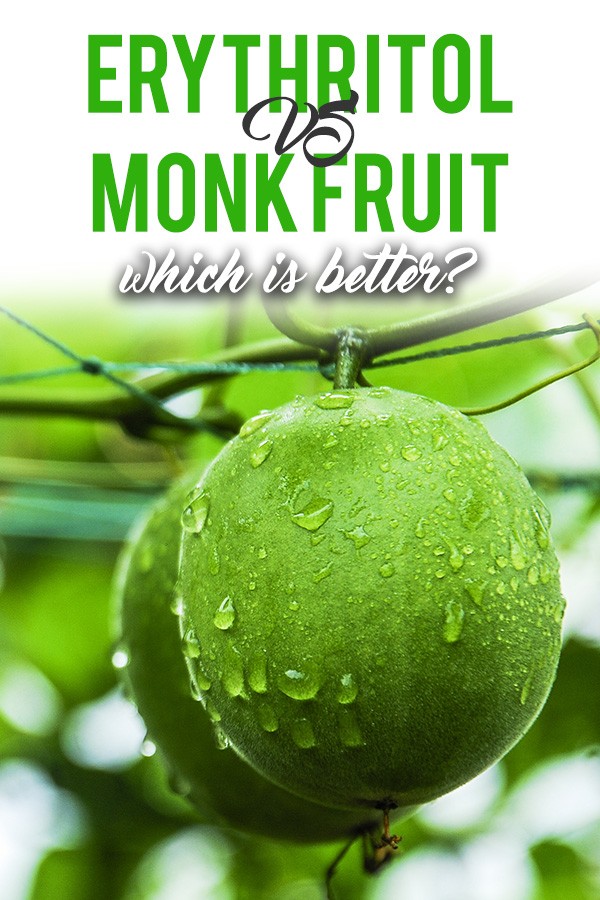



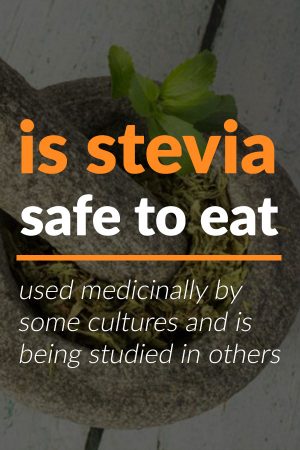
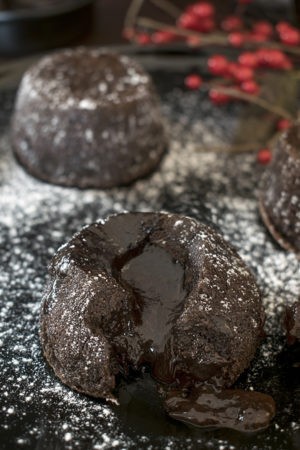
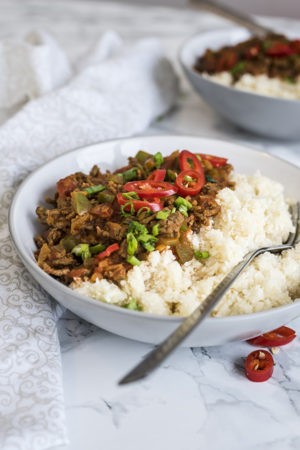

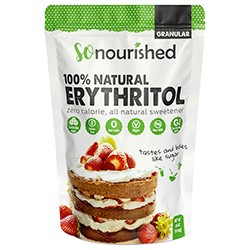
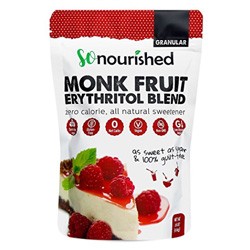

I have a few recipes that call for erythritol but I want to use monk fruit (Lakanto brand) instead. How would I substitute that?
Just use a bit less of the monk fruit sweetener! Erythritol is only 70% as sweet as sugar so you need to use a bit more of that. Monk fruit baking blends are blended with erythritol to create a mix that is more equivalent to sugar.
Very helpful when I am in the first few weeks implementing cooking and baking on the Keto lifestyle! Thank you for the comparison and info. J